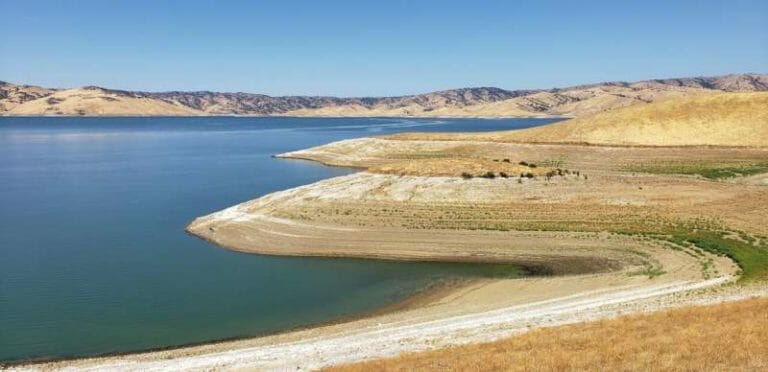Water in the San Luis reservoir, which was constructed as a storage reservoir in California’s Central Valley. Groundwater in this region may never be able to recover from past and future droughts, according to new research published in Water Resources Research. Credit: Fredrick Lee
Groundwater in California’s Central Valley is at risk of being depleted by pumping too much water during and after droughts, according to a new study in the AGU journal Water Resources Research, an interdisciplinary journal that focuses on hydrology and water resources.
The new study shows groundwater storage recovery has been dismal after the state’s last two droughts, with less than a third of groundwater recovered from the drought that spanned 2012 to 2016. Under a best-case scenario where drought years are followed by consecutive wet years with above-average precipitation, the researchers found there is a high probability it would take six to eight years to fully recover overdrafted water, which occurs when more groundwater is pumped out than is supplied through all sources like precipitation, irrigation and runoff. However, this best-case scenario where California has six to eight consecutive wet years is not likely because of the state’s increasingly hot and dry […]
Full article: Groundwater in California’s Central Valley may be unable to recover from past and future droughts

